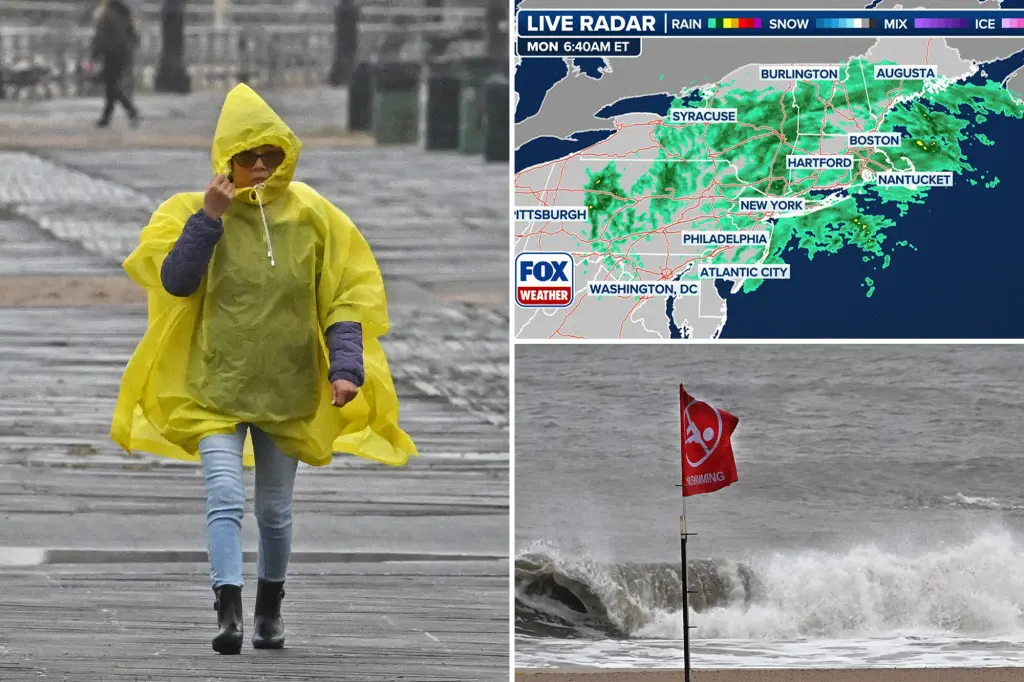Nor’easter Brings State of Emergency to Northeast
A powerful nor’easter storm has swept up the Eastern Seaboard, prompting New York Governor Kathy Hochul to declare a state of emergency for New York City, Long Island, and Westchester County. The declaration came Sunday evening as the storm unleashed its fury with powerful winds, heavy rain, and coastal flooding across the region. “We’re ready to assist local partners as damaging winds and heavy rain move in, with the potential for flooding and power outages,” Governor Hochul announced on social media. The severe weather conditions forced the cancellation of New York City’s 81st Annual Columbus Day Parade for safety reasons. Parade officials stated the event couldn’t be rescheduled and would return in 2026. By Monday morning, streets in Freeport, Long Island were already underwater as the storm continued its assault on the area.
Before reaching the Northeast, this same weather system had already battered the Southeast and Carolinas over the weekend, bringing several inches of rain and tropical-storm-force winds from North Carolina’s coast all the way up to the Jersey Shore. The storm’s threat was so significant that Acting New Jersey Governor Tahesha Way declared a statewide emergency covering all 21 counties, which went into effect Saturday. By Monday morning, the storm’s impact on power infrastructure was evident, with nearly 40,000 outages reported across four states. Connecticut and New Jersey bore the brunt of these outages according to PowerOutage.com. Meanwhile, North Carolina’s vulnerable Outer Banks faced another round of coastal battering, with massive waves and flooding putting additional beachfront homes at risk. The area had already lost nine homes to encroaching surf earlier in the month, with several more teetering on the verge of collapse.
The situation in North Carolina grew dire as road crews from the Department of Transportation worked urgently to clear Highway 12 for storm-battered areas of Hatteras Island. The highway had been closed Sunday due to significant flooding – a recurring problem in recent weeks when Hurricanes Imelda and Humberto had similarly forced closures. The storm’s reach extended north to Delaware, where officials activated the National Guard to assist with storm response efforts. The Delaware Emergency Management Agency (DEMA) coordinated with state and local officials since Friday in preparation for the nor’easter’s impacts, pre-positioning National Guard assets for deployment as needed.
Voluntary evacuation orders were issued for portions of Bowers Beach in Delaware due to coastal flooding threats, and reception centers were opened in Kent and Sussex counties with shelter preparations underway. “With continued concern for moderate to major coastal flooding, and damaging winds, there remains the potential for storm and wind-related tree damage, power outages, and roadway flooding with the possibility for more local evacuations,” Delaware officials warned, urging residents to stay informed and follow directives from local authorities. The storm’s intensity was clearly evidenced by the tropical-storm-force wind gusts recorded along the coast, from the Southeast through the mid-Atlantic and into the Northeast. South Carolina saw more than 10 inches of rain in some areas, with widespread amounts of 4-5 inches reported across the Carolinas.
Wind measurements demonstrated the storm’s power, with a 62-mph gust reported at Jennettes Pier, North Carolina, and a 61-mph gust at Cape Lookout. Similar tropical-storm-force winds were reported along the New Jersey coast. The combination of heavy rainfall and powerful winds created dangerous conditions across the entire affected region. By Monday, the storm continued its northeastern march, with the FOX Forecast Center reporting that heavy rain and gusty winds were impacting communities all along the Interstate 95 corridor from Atlantic City northward through New York City, New Haven, Providence, and Boston. Even inland communities were not spared, with significant rainfall reported in Hartford, Connecticut, and Albany, New York.
Though the winds had diminished somewhat by Monday, the storm’s effects were expected to linger into at least Tuesday. Coastal flooding was predicted to peak early Monday when winds shifted from blowing directly onshore to more parallel with the coastline, finally offering some relief to battered shorelines. For most of the affected region, Monday was expected to be a complete washout with miserable conditions. While parts of the Jersey Shore might see improvement later in the day, areas from Long Island to Boston were told to expect continued challenging weather through the day. This powerful autumn nor’easter serves as a stark reminder of the increasing frequency and intensity of coastal storms affecting the Eastern Seaboard, creating challenges for emergency management officials and coastal communities already dealing with erosion and infrastructure vulnerabilities.










